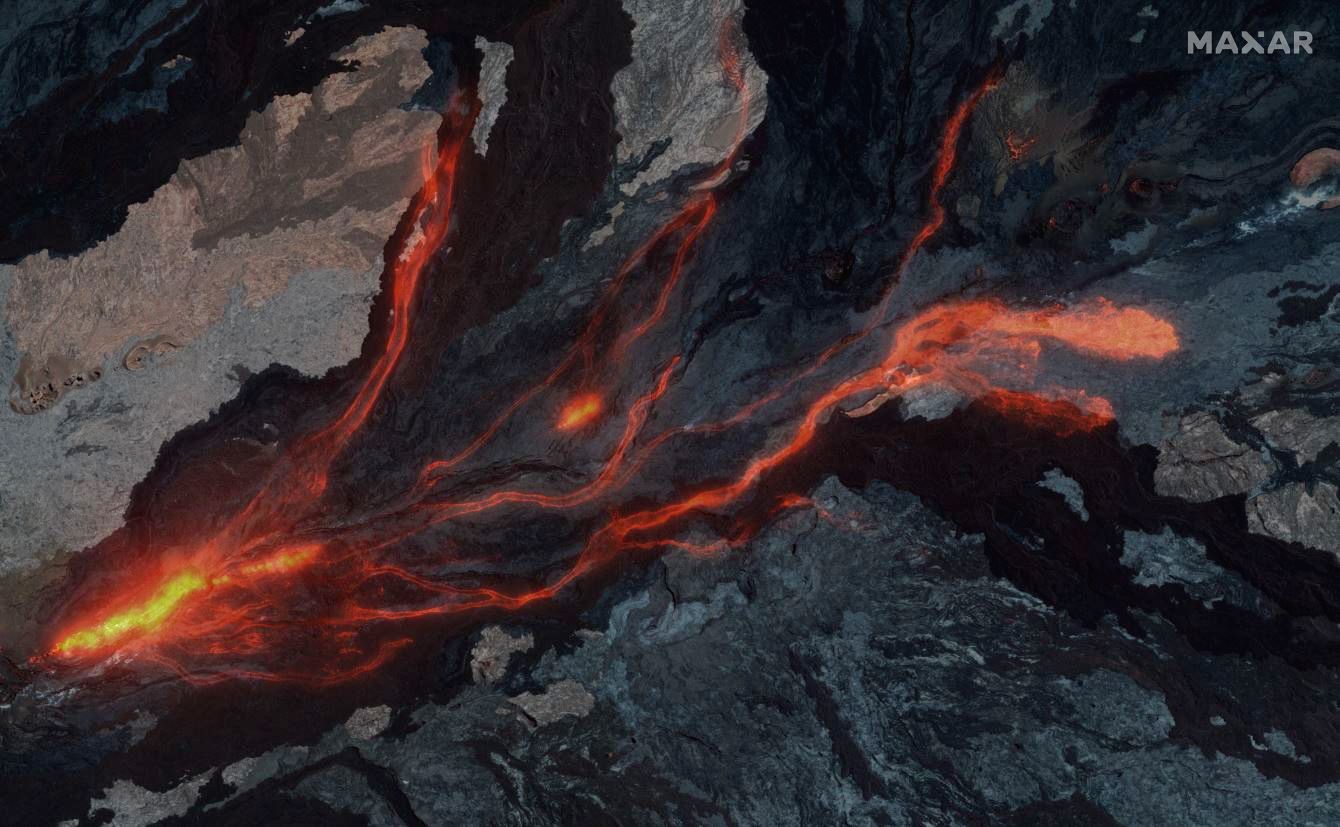Lava continued to flow from Hawaii’s Mauna Loa volcano on Tuesday, though authorities stress that the erupting volcano isn’t threatening local communities.
The big picture: Mauna Loa, the world’s largest active volcano, erupted for the first time since 1984 late Sunday night.
- The eruption has resulted in three major fissures, but only the lowest of the three fissures was active, the U.S. Geological Survey said in an update late Monday.
- “Estimates of the tallest fountain heights are between 100–200 ft (30–60 m), but most are a few yards (meters) tall,” it added.
- “No populated areas are currently threatened,” the U.S. Geological Survey Volcanoes tweeted early Tuesday.
State of play: The Hawaii Department of Health said Monday that while air quality remained normal, “conditions are changing rapidly” and residents and visitors should be prepared for changes such as ash and increased levels of sulfur dioxide in the air.
- Hawaii’s Department of Land and Natural Resources (DLNR) announced Monday that it would close the nearby Kipuka ‘Ainahou Nēnē Sanctuary and the Mauna Loa Forest Reserve for at least 90 days.
- Hawai’i Volcanoes National Park remains open, but the park’s superintendent said in a National Parks Service press release that they are keeping a “close watch” on the situation.
- Public school campuses have remained open on Monday and Tuesday, according to the state’s Department of Education.
- Mauna Loa’s eruption has created a rare, dual-eruption event, since the neighboring volcano, Kilauea, has been erupting since September 2021. “Neither eruption is threatening homes or infrastructure at this time,” the National Parks Service said in a press release.
In photos:








Editor’s note: This story has been updated with additional images.
link

